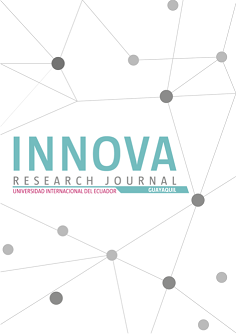La motivación en los negocios. Estrategia para estimular la innovación en los diferentes tipos de negocios
Main Article Content
Abstract
It presents an experience in management for business motivation, which leads to an idea of innovation, capable of providing a business culture in different branches of business. It takes into account the relationship between experiences, experiences and the knowledge of entrepreneurs who are strong dynamic agents for technical, technological, labor and professional training. The study of innovation highlights the role of business as an innovative agent. Therefore, the analysis will seek to identify not only the importance of business in innovation, but also to try to establish how innovation is linked to the orientation of business. Innovation has been visualized, sometimes without a sufficient scientific basis, as a key element of differentiation, not only at the microeconomic level, but also at the macroeconomic level. That is why, nowadays, innovation is understood as a crucial key factor in all levels of economic activity in a country. Ideas can only be innovations after they are implemented as new products, services, observing that the human changes that the world has witnessed have been the result of the tendency to look for something new and different, so new ideas in the world do not end, but when these ideas create value, they are transformed into innovation. Good ideas are useless unless they are executed. The motivation of human talent is born of opposite situations when people are not willing to work and flee from it as soon as they can. They must be forced to work, be controlled and directed. By nature they are reluctant to change. Therefore, to the administrative instances in general, they have only two ways: the hard of coercion and threat, or supposedly "letting do" what people like based on the philosophy of the carrot and the club. There, words more or less words, the core of the Theory "X" driven by the old school of human talent management, which has been the foundation of actions undertaken by many companies and governments around the globe. This article is immersed in the components of a good innovation strategy.
Downloads
Article Details
COPYRIGHT NOTICE
Authors who publish in the INNOVA Research Journal keeps copyright and guarantee the journal the right to be the first publication of the work under the Creative Commons License, Attribution-Non-Commercial 4.0 International (CC BY-NC 4.0). They can be copied, used, disseminated, transmitted and publicly exhibited, provided that: a) the authorship and original source of their publication (magazine, publisher, URL and DOI of the work) is cited; b) are not used for commercial purposes; c) the existence and specifications of this license of use are mentioned.
References
Abella, M. J. (2002). Encuesta Piloto de Actividades de Innovación en la industria. Uruguay: DINACYT (inédita).
Bello, L., & Gómez, J. (1996). Las denominaciones de origen y otras señales de calidad en las estrategias de diferenciación. España: Cuadernos aragoneses de economía, Nº 6:2.
Cooper, R. (1999). The invisible success factors in product innovation. Journal of Producto Innovation Management, 16.
Cooper, R. (1999). The invisible success factors in product innovation. Journal of Producto Innovation Management.
Chan Kim, W. y. (1997). Innovación de valor: la lógica estratégica del alto crecimiento. En W. y. Chan Kim. Chile: Harvard Business Review.
Einstein, A. (1935). The World As I See It. Open Road Integrated Media, LLC. En A. Einstein.
Francisco, G. V. (1990). En G. V. Francisco, " Liderazgo ", Ed. Instituto de CapacitaciónPolítica. MéxicoD.F.: Ed. Instituto de Capacitación Política.
FUNIVCYL. (2012). Manual del Emprendedor Universitario. Castilla y León: Symbiosis Strategy & Management Consulting, S.L.L. En FUNIVCYL.
González, L. A. (2004). La motivación hacia el estudio. Fundamentos y Metodología para su evaluación en Secundaria Básica. . Habana.
Internacional, C. (1998). Manual del Facilitador. Plataforma Aurea. En C. Internacional. Valparaíso, Chile.
Nuttim, J. (2014). En Teoría de la motivación humana. Editorial Paidos.
Nuttim, J. (2014). Teoría de la motivación humana. En J. Nuttim. Editorial Paidos.
Paredes, E. (2011). Motivación del talento humano. En E. Paredes.
RÍOS MARTÍNEZ, W. y. (2011). En W. y. RÍOS MARTÍNEZ, Fortalecimiento De La Componente Creativa En La Formación Empresarial. . Universidad Icesi: Santiago de Cali.
Seeley, J. (Septiembre de 2001). El desafío de la innovación. . págs. Vol. 6, Nº 5.
Taylor, & Bogdan. (1987).
Timmons, J. (1999). New Venture Creation Entrepreneurship for the 21st. Century. Boston: Irwin Mc GrewHill.
Villegas, F. G. (1990). "Liderazgo ". México: Ed. Instituto de Capacitación Política.
Wilson, M. T. (1979). El ámbito de la motivación (ambiental. Fisiológica, mental y social). En M. T.
Wilson. México: Editorial El Manual Moderno S.A.
Zatarain, I. M. (1990). “Redacción e Investigación Documental“,En I. M. Zatarain. UPN (Sep), México.






